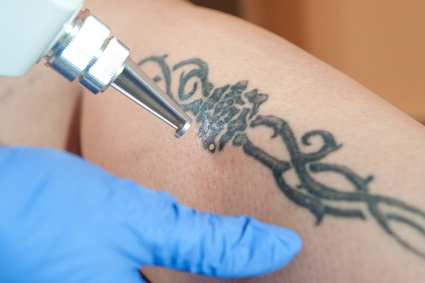

As more people are getting tattoos on their body, the demand for tattoo removal is also increasing. Unfortunately, in Korea, there are only a small number of doctors that specialize in tattoo removal.
Tatoa Clinic is one of the very few aesthetic clinics that specialize in tattoo removal. In a new series, Dr. Kim Namhoon of Sinsa Tatoa Clinic and Dr. Kim Ilwoo of Wonju Tatoa Clinic will share their clinical experiences in tattoo removal.
This new series will cover both practice and theory of tattoo removal and include topics such as histological response to tattoo ink, patient selection, laser therapy, and complications, etc.
I hope our readers can benefit from these discussions as tattoo removal is regarded as a blue ocean in this highly saturated aesthetic market.
After a tattoo is created, the pigments in the epidermis are lost but those in the dermis remain. These pigment particles can be seen inside the cytoplasm of mononuclear cells, fibroblasts, mast cells and macrophages. That is, the target of Laser tattoo removal is not melanin but tiny ink particles in dermal macrophages or extracellular tissues.
Laser tattoo removal is based on the concept of selective photothermolysis. The Laser light energy is first absorbed in the cells containing ink particles and converted into thermal energy to induce selective destruction of the cells. Irradiating Laser onto a tattoo lesion pulverizes pigment particles inside cells through selective photothermolysis and are redistributed through the action of various inflammatory cells, making the tattoo to fade away.
As already mentioned, the target of Laser tattoo removal is very small; cells containing pigment particles. Therefore, the pulse duration of Laser and thermal relaxation time should be very short in order to minimize damage on surrounding normal tissues while causing sufficient photothermolysis. For this reason, the Q-switched Laser with the pulse duration in the nanosecond range is often used for tattoo removal. Recently, a picosecond Laser with even a shorter pulse duration than the nanosecond range is becoming popular in tattoo removal. I expect more innovations in this field as research on Laser pigment removal is continuing.
[Advertisement] MAGNUM(Q-switched Nd:YAG Laser) – Manufacturer: (www.i-dana.com)]
Patient Selection
Treatment outcome can vary depending on the type of tattoo lesion and patient conditions. Therefore, it is important to communicate to the patient that complete removal may take 5-20 treatments or may even be impossible.
There is data that indicate professionally drawn tattoos varying colors and depths and are more difficult to remove. Very often, treatment response is poor in cases with tattoo containing multiple colors(red and yellow, etc.) or ink mixtures. Additionally, a tattoo lesion with ink particles existing in varying depths in the dermis is also difficult to remove.
The Fitzpatrick I and II skin types and black and blue ink respond well to removal treatment. Tattoos that are at least a year old also show good response. Tattoos that have conditions that are different from the above are difficult to completely remove and have a higher risk of scarring or pigmentary problems. A high level of experience is required for such cases. Laser tattoo removal carried out within the first three months of getting the tattoo has very poor response as a precise target for Laser therapy cannot be found. Therefore, I recommend performing the removal at least 6 months after getting the tattoo.
-To be continued




















